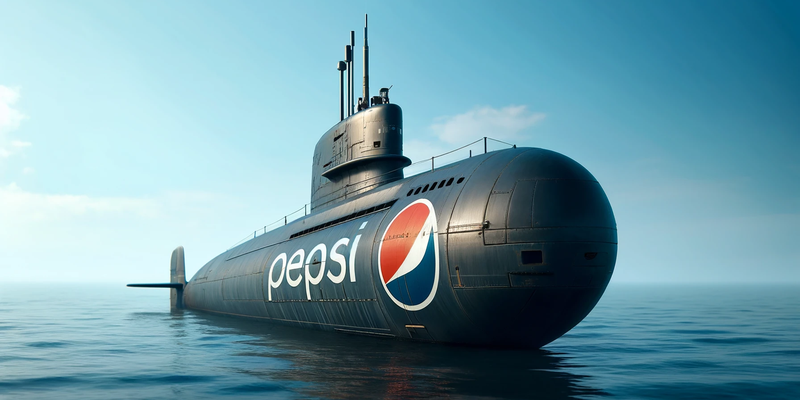Started by 3 brothers, this iconic innerwear brand recorded highest ever turnover of Rs 1,261 Cr during COVID-19 pandemic
PR Agarwal, GP Agarwal, and KB Agarwal were responsible for starting Kolkata-based Rupa Company in the 1980s in India. Here’s how the innerwear brand became a household name and posted its highest ever turnover and profits despite the COVID-19 pandemic.
In their younger days, PR Agarwal, GP Agarwal, and KB Agarwal grew up watching their father run a clothing store that sold innerwear.
Intrigued and interested by the innerwear and hosiery market, the brothers decided they’d never take a job anywhere. Instead, they would only run a textile business and sell socks, stockings, etc.
This immovable conviction sowed the seeds for starting Rupa - the innerwear company most Indians know and recognise as one of the market leaders in the segment.
In an interview with SMBStory, Ramesh Agarwal, Executive Director and CFO at Rupa, says:
In 1968, my father PR Agarwal and his brothers started Binod Hosiery, and eventually launched Rupa as a brand that took over Binod Hosiery in 1985. Since then, nobody in our family has taken a job anywhere. As a family business, we grew Rupa into a large manufacturer of innerwear and moved our headquarters to Kolkata.”
Selling vests, briefs, boxers, etc., for men; bras, panties, etc., for women; and other innerwear for kids and children, Rupa brands such as Frontline, Softline, Euro, and others have now become household names.

Ramesh Agarwal, Executive Director and CFO, Rupa
The early days
It is difficult to find a home which has never purchased a Rupa product. But this widespread presence across India was made possible only because the founders decided early on to move from a made-to-order manufacturing approach to an inventory-based model.
Ramesh explains, “When the business was new, there were few resources and limited funds available to run or scale it. We had an agent in Patna who would connect us with B2B customers in need of made-to-order shipments of a few dozen products. In those days, we only conducted such one-on-one business. There was no concept of stocking and selling.”
As the production capacity increased, the founders realised they could do a lot more with the stock they had. They began exploring markets in the neighbouring state of West Bengal, and established Rupa in Kolkata in 1985.
Over the years, the company set up four manufacturing facilities located in Domjur (West Bengal), Tirupur (Tamil Nadu), Bengaluru (Karnataka), and Ghaziabad (NCR), with a capacity of seven lakh finished goods per day.
However, some major processes in manufacturing are outsourced to workers in West Bengal and Tamil Nad.
Ramesh says, “Some intermediary production is done on a job work basis, which reduces our need for capex. We buy yarn, send it for knitting, receive the fabric, and again send it for processing. We do have our own knitting and processing factories, but we mix and match based on the requirements and cost effectiveness.”

Rupa's iconic Frontline vest for men
Organised vs unorganised market
Lately, Rupa has been doing more cutting of the fabric in-house, as pilferage and wastage increases when it is outsourced.
Ramesh believes this also helps the company maintain uniform quality across its products - a factor he believes is critical for helping set a brand apart in the competitive innerwear market.
According to him, consumers are rapidly becoming brand-conscious even in rural areas that are well connected by roads and the Internet.
And this places a responsibility on innerwear brands to ensure high product quality and consistency in order to capture the market share from regional, unorganised players.
“Our entry level brands compete with unorganised products, and although our products may be marginally more expensive, consumers still prefer to buy our products. For most of these entry level and middle segment brands, we go through wholesalers, and we don’t have much control over the wholesaler’s sales.”
For Rupa’s more premium brands, the company retails through distributors, which it appoints and books orders. It is also selling multiple range of products through a direct to consumer (D2C) model online through Amazon, Flipkart, its own website, and others.
“Online sales compared to brick-and-mortar sales are very low, but picking up fast. We have also been in talks with other online brands to create product lines with them as co-marketing efforts,” Ramesh adds.

A sewing unit at Rupa
Thriving amidst COVID-19
With its focus on retailing essential clothing items like innerwear and a manufacturing model which is neither too asset-heavy or asset-light, Rupa was able to survive the impact of the COVID-19 pandemic.
In fact, not only did it survive - but it thrived.
When several Indian businesses experienced slowdown and drop in revenue through FY21, Rupa recorded its highest ever net sales turnover of Rs 1,261.22 crore and profit after tax of Rs 180.90 crore.
Despite the adverse impact of multiple lockdowns across states, FY21 sales exceeded FY20’s net sales turnover of Rs 941.4 crore and profit after tax of Rs 80 crore.
In FY20, demonetisation and implementation of GST had hit local retail stores, which began limiting their purchases of stock and delaying their payments.
In 2021, there is now growth in sales volumes across the innerwear market, which has recovered more quickly from the COVID-19 impact than other apparel segments such as formal wear or party wear.
Ramesh explains:
“People’s basic requirements are roti, kapda, aur makaan (food, clothes, and house). As we make innerwear - the most basic element of clothing - we saw significant recovery after the lockdowns were eased. Although the workers were impacted during both waves of the pandemic, we are now back up to 75-80 percent production capacity.”
In fact, Lux Industries, one of India’s largest innerwear makers - and a Rupa rival - also reported revenue growth to Rs 1,964 crore in FY21 compared to Rs 1,674 crore in FY20. Its profits also increased from Rs 177.2 crore to Rs 269.3 crore

Rupa's unit at Tirupur
Challenges and way forward
A one-year increase in sales doesn’t completely insulate Rupa and other innerwear manufacturers from evolving challenges in the wake of the pandemic.
With yarn prices rapidly increasing to over 50 percent in seven months (due to rising export demand), Rupa had to pass a part of the increased cost down to the consumers.
In an ideal scenario, it would have increased product prices by 20 percent, but due to customer resistance, it managed to pass down a 10 percent price rise.
“In the short term, fluctuations in raw material prices will definitely impact us. The cost of plastic, cardboard, and packaging is also on the rise. We can’t sell below production cost, and when we look at our competitors, we see them also in the same boat,” says Ramesh.
Like Rupa and Lux, Dollar Industries, another leading innerwear brand, also improved its FY20 numbers. It clocked Rs 1,036.96 crore in net sales turnover and profit after tax of Rs 87.28 crore in FY21 - up from Rs 969.32 crore and Rs 59.45 crore in FY20.
In the midst of changing market realities, Ramesh believes these innerwear behemoths have an advantage over newer, D2C brands looking to capture a slice of the pie.
“As they are smaller players, any rise in investment due to increasing raw material prices is going to impact production in a bigger way. It is challenging because at the same time, they need to ensure product quality and brand USPs remain consistent,” he says.
Going forward, Rupa is looking to grow by 17-18 percent year-on-year, and also become more organised in sales. It intends to convert some wholesalers into distributors so it can take more control of where and to whom its products are sold.
“We will also gain more knowledge about why people may or may not be buying Rupa’s products. Our whole game plan for retail might change. We also plan to focus on retailing in large format stores as customers increasingly prefer to buy everything from a single store,” Ramesh says.
Edited by Megha Reddy













